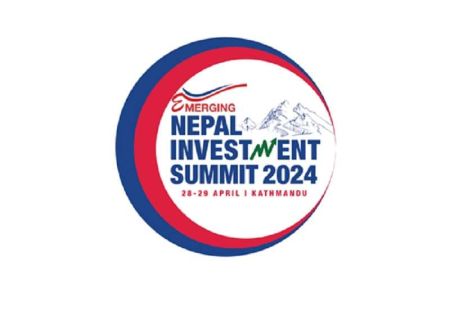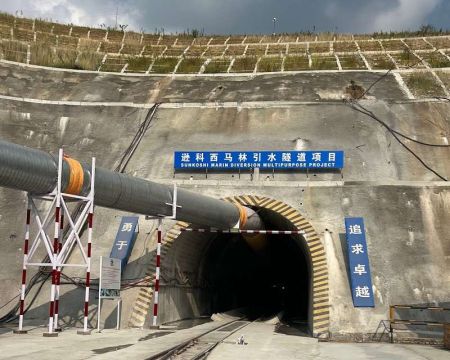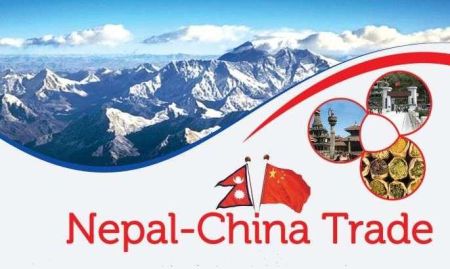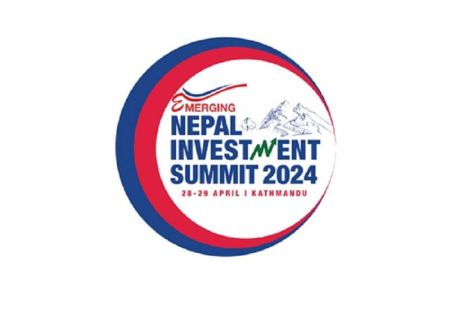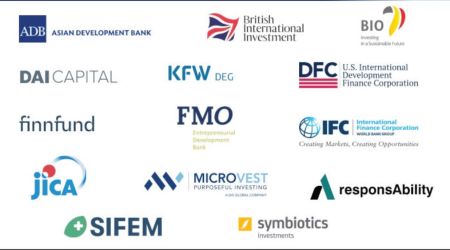.jpg) By Achyut Wagle
By Achyut Wagle At present, Nepal stands at the crossroads, as perhaps never before in its history, in several respects – political, economic, social, structural etc. In particular regard to economic policy, it is veering more towards the replay of 19th century model of state-controlled, putatively self-sufficient ‘nationalist’ and thus effectively an isolationist paradigm. The policy shift seems to have completed a full-circle from the campaign of self-sufficiency, trumpeting of fulfilling basic needs, then open-market-oriented liberal policies to the present one marred with confusion but decidedly intended to execute state-controlled economy.
Apparently, as elsewhere, the vicissitudes in the Nepali economic policy has been analogues to the nature of the political dispensation the country adopted in different points in history. The externalities too have their share of influence in shaping these policies. Such an influence is surely growing with the changing world order, shifting of epicentres of economic activities and, of course, with dramatically increased communication and transportation connectivities.
The Vicissitudes
Nepal presented its first national budget in 1952. Until the fall of Rana oligarchy in 1951, Nepal remained primarily a vassal state. Any economic policy under a 104-year long Rana rule used to be based on the whims of the ruler and that too, related only to the land tax and management of major temple trusts or ‘Guthis’. Back then, almost cent per cent people relied on agriculture of subsistence nature. State hardly spent for developing infrastructure, public delivery and services systems. The fall of Rana rule and dawn of democracy in 1951 February definitely heralded a new era both politically as well as economically.
The first budget had three prime policy focuses – expansion of education, promotion of co-operative like structures at the village level to increase agricultural productivity and monetising the economy to the extent possible. This also welcomed the American aid in the country thus far remained largely closed, except for British and Indian diplomats, for the outside world.
Those initial policies were fairly realistic to Nepal given the socio-economic realities of that time. But, the political squabbles and power struggles overshadowed the implementation of them for at least a decade to come. However, despite politically a fluid situation, mid 1950s marked as a major milestone – mainly in two respects – in 1955 Nepal Rastra Bank (NRB) was established and in 1956 Nepal adopted its first five-year plan.
One of the major objectives of the NRB was to replace the Indian currency, which was widely circulated in Nepal, by the Nepali currency. Second one was to speed up the process of monetising the economy in place of widely practised barter system in goods and labour.
The first plan focused on transport and communication infrastructures. A substantial allocation was made in developing the administrative structure all across the country. But before the completion of the first five year plan due 1961, political coup d’état by the then King changed the whole economic paradigm, development priorities and naturally their outcomes.
Flip-Flops of Panchayat
The second plan was only for three years by lapsing a year. It was prepared by the National Planning Commission, a Russian style central planning mechanism, which still exists with very little variation.
From the third five-year plan on, the partyless panchayat system under the direct rule of the King imposed a guided development policy. The economic policies were rather random mix of socialistic and capitalistic overtures. The state heavily invested in setting up state-enterprises of all sorts – manufacturing, services and deliveries. This was an era of ‘generous’ foreign aid and Nepal was opened to all hues of them, albeit, with caution not to politically destabilise the largely totalitarian panchayat polity. Local panchayats were the political-administrative channels employed to carry out economic and development activities.
The seventh five-year plan (1985-90), the last of panchayat era, made two major policy departures. First, the plan categorically pronounced to work towards meeting the basic needs of the people, under the slogan coined as ‘elevating the people’s living to Asian standards’. And, second, it adopted a ground-breaking policy flexibility of inviting foreign direct investment and improving the performance of the state enterprises as recommended by Structural Adjustment Programme (SAP) piloted by the International Monetary Fund (IMF). During this period, apart from several foreign investments in tourism related industries, two foreign joint-venture banks, Nepal Arab Bank (Nabil) and Nepal Indosuez Bank were established.
The Openness
The reinstatement of multi-party democracy in 1990 began an era of economic liberalisation in Nepal too. The political change delayed the eighth plan by two years. But the eighth plan (1992-97) firmly advocated the privatisation of and divestment from the State Owned Enterprises (SOEs) and open market policies across all sectors. Undoubtedly, the forces of globalisation and international trend of reclaimed openness through democratic governance in former USSR and Eastern Europe contributed to these developments. Whatsoever, this is perhaps the ‘golden era’ in terms of economic policy formulation and growth in Nepal. During this period, private sector investment was impressive. Airlines, hospitals, educational institutions, banks and manufacturing units were set-up by private investment. Public investment in infrastructures, mainly roads provided firm basis for urban access to villages. The ninth plan was generally continuation of the eighth plan. But the growth spirit was dampened by the armed insurgency initiated by the CPN-Maoist in 1996 February. Amidst fear and uncertainty, the economy dragged on. But the growth path was already truncated before the end of this plan in 2002 due to spread of violence in the country-wide scale, destruction of infrastructure and absence of any substantive private investment. Despite all odds, the GDP growth in the 1990s was about five per cent annual average.
The Poverty Focus
The tenth five-year plan was adopted through wider consultations with donor community led by the World Bank and other stakeholders. The whole plan was baptised as Poverty Reduction Strategy Paper (PRSP). True to its name, its focus was on poverty reduction with added dimensions like putting women in the forefront of rural poverty reduction strategies. An interesting policy link was introduced between the structural and legal reforms and the poverty reduction.
At the very beginning of the plan, Nepal Development Forum was organised for the first time in Nepal. As the Maoist insurgency had become widespread, it also tried to look into the links of the factors like poverty, unemployment and social unrest or insurgency. Interestingly, however, the main policy basis adopted in 1992 that emphasised on the free market economy continued till the tenth plan that ended in 2007. One of the highlights of the tenth plan was Financial Sector Reform Programme (FSRP) that aimed to achieve the central bank autonomy and efficiency, reform in public sector banks, Rastriya Banaijya Bank, Nepal Bank Ltd and Agricultural Development Bank. Several other institutional set-ups like Credit Information Bureau, Debt Recovery Tribunal etc were added. Substantive legislative reforms were made, including a composite Bank and Financial Institutions Act 2007 (BAFIA). Reform in the capital market was another important agenda which has only partially achieved.
Some of highly ambitious reform agenda like bringing the financial giants like Employee’s Provident Fund and Citizen Investment Trust under an effective regulatory and supervisory ambit and establishing an Asset Management Company remained untouched. Despite generally appropriate policy directions in the later years of the tenth plan, the focus on implementation got immensely diluted. Among many other things, the process of privatising SOEs did not go ahead as expected.
On the Reverse Gear
After signing of Comprehensive Peace Agreement with the Maoists in 2007, the discourse on economic policy has taken a backseat. The Agreement and the election for the Constituent Assembly both established the apparent dominance of the communist forces in Nepali politics. This not only changed but reversed the very orientation of national economic policy. Since then, no five year plan has been formulated. Two interim plans of three-year each were adopted in view of the prolonged political transition.
Contrary to the general expectation that the post-CPA period would create more conducive atmosphere for economy to grow, the economic performance has gone from bad to worse. The policy confusion is at its core. The communist forces, particularly the UCPN- Maoist is oscillating between proletarian dogma of state-controlled, distributive economy and present day global realities that demand openness and interdependence. The party’s heavy political reliance on its trade unions have made them unruly and major source of industrial disturbances. This has telling adverse effect of spatial nature on manufacturing and exports, new investments and employment generation. In a nutshell, Nepali economy is again going back to the era of “everything done by the state.†Recently it has created new state-owned corporations like Hydropower Development Bank. No government policies assertively talk about privatisation and reform. In a bid to balance the international realities and communist indoctrination, the racing horse of growth has turned into a camel.
For the last couple of years, the Maoist-UML coalition is in power. It has vehemently pushed a three-pillar – government, cooperatives and private sector – concept of economy which has irked and made apprehensive to the private sector regarding its role and treatment from the state. The private sector is unwilling to consider the cooperatives a separate sectors but the subsector of the private. Given nature, scale and GDP contribution, this proposition seems justifiable. But the more left-oriented policy makers have seen cooperatives as the substitute to the ‘commune style’ operation of the economy, thus the emphasis. The cooperatives’ contribution to the national GDP is estimated to be meagre 2 to 3 per cent.
Of late, the donor community and the potential investors – both foreign and domestic – seem to have lost interest in Nepali economy owing largely to absolute lack of policy predictability, growing apprehension of infringement on private property rights and disturbed industrial peace at the hands of ruling-party hoodlums and even state’s failure to bring them to justice.
The Future
Nepal apparently does not stand at a point of immediate course correction so as it could regain the lost trust and re-ignite the growth engine. There are two main reasons for this: first, the communists, particularly the Maoists are still essentially against the concept of giving the private sector a lead role in economy. Not only that, their anti-private sector rhetorics is often repeated in this or that form. Recently, they have announced that ‘all’ party leaders would pull-out their children from private schools; purely a futile and demonstrative move. Therefore, until, the party recognises the private sector as major player in the economy and reflects the same in both – policies and actions, economy is unlikely to come out of present sluggish pace of growth – 3.5 per cent in the last fiscal year.
The second is the complete absence of the economic policy debate in all major political parties. Any economic policy introduced so far by any party or the government is not an outcome of all through meaningful debate from the local to the central bodies in a manner a democratic outfit should ensure for ownership and the implementation of these policies. Only adoption of this practice can bring the economic agenda to the forefront of the national debate and the policy predictability could also be ensured.






